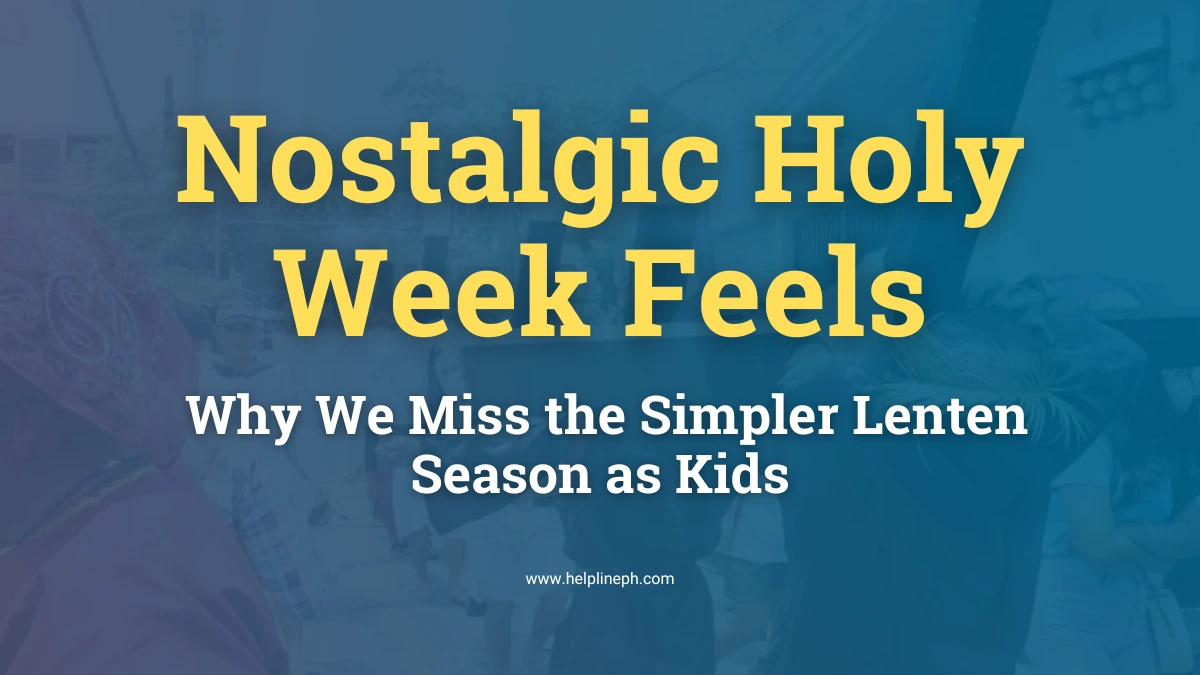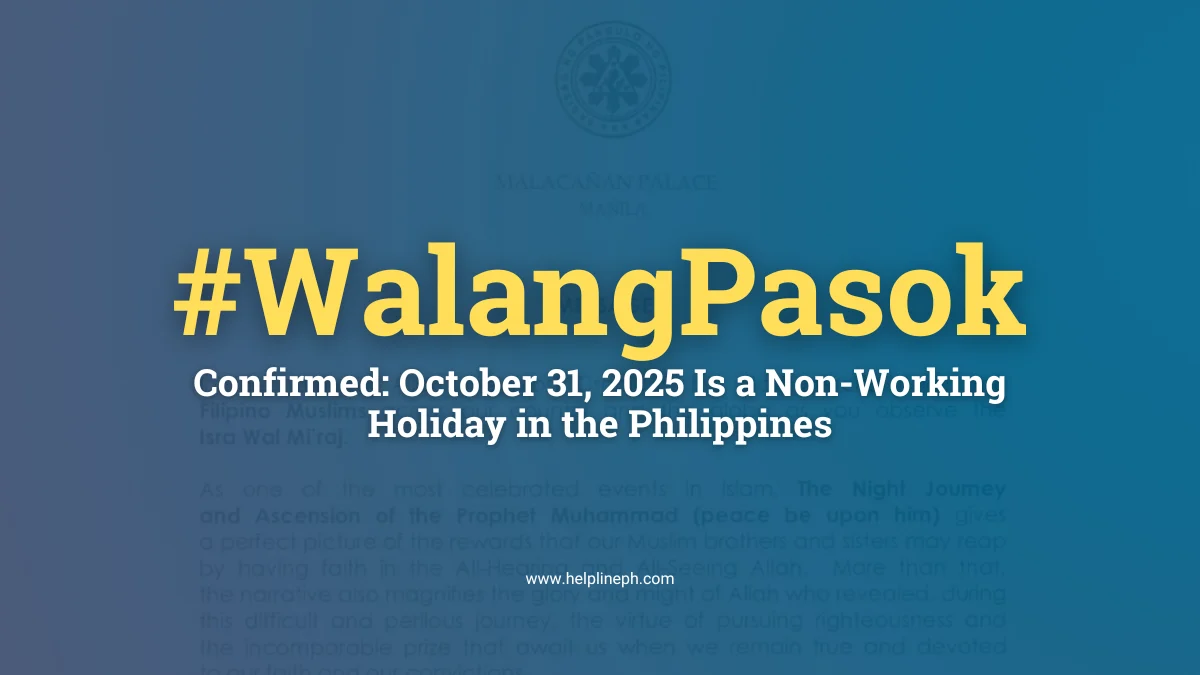Nostalgic Holy Week Feels: Why We Miss the Simpler Lenten Season as Kids
Nostalgic holy week memories always hit different. For many of us who grew up in the Philippines, Holy Week was more than just a religious event—it was a break from school, a time to visit the province, and a season full of quiet moments that now feel rare.
As kids, we didn’t think too much about the meaning behind the rituals. But now that we’re older, it’s that feeling—the calm, the family bonding, and even the boredom—that we find ourselves missing the most.
Life Before Smartphones: Childhood Holy Week Memories
Back then, Holy Week meant no cartoons on TV, slow afternoons, and being warned not to laugh too loud or take a bath on Good Friday.
Sounds weird now? It kinda was—but that’s exactly why it was unforgettable.
We’d gather with cousins, sit on the floor in front of the TV waiting for Tanikala, or maybe an old Marian Rivera film. Even if the shows weren’t exciting, just watching together made it fun. Sometimes, someone would fall asleep with the sound of the Pabasa in the background, echoing from a neighbor’s garage. That’s a core memory right there.
Going Home to the Province: The Excitement of Seeing Family
One of the best parts of Holy Week was going back to the province. Once Holy Wednesday came, people from Manila would start traveling back home. My family was no different.
Relatives started arriving one by one. The house would suddenly feel full, warm, and noisy in the best way. Lolas would cook big meals (without meat, of course), and you’d hear nonstop stories from titos and titas. Every meal was like a reunion. Every day felt like a special occasion.
And yes, there was always that one cousin who wanted to go to the river or beach, even if lola warned everyone not to swim because “patay si Hesus.”
Lenten TV: Boring or Bonding?
TV during Holy Week was… let’s be honest, kind of boring. Local channels stopped airing their usual shows and replaced them with Lenten specials and religious movies.
But somehow, we still found ourselves watching. Why? Because it was shared time. Even if you were just sitting in silence next to a sibling or cousin, there was comfort in that boredom. It gave us time to talk, or just do nothing together—something that doesn’t happen as often now.
If you had cable, you were lucky enough to catch a Barbie movie marathon or 7th Heaven reruns on Studio 23. Otherwise, it was time for books, board games, or listening to the radio.
Pamahiin and Penitensya: Strange Traditions That Made It Unique
Who else remembers being told not to laugh, play, or even get a wound on Good Friday because “baka hindi na maghilom”?
Those pamahiins (superstitions) made Holy Week feel more intense. You’d hear stories like, “May naging bato raw kasi maligo siya noong Biyernes Santo.” Whether or not you believed them, they were part of the experience.
Then there were the penitensya (self-flagellation) parades. Some kids were scared, others were amazed. Watching the processions at night with flickering candles and big wooden statues felt so serious, so real.
Even if it was eerie, it was unforgettable.
The Shift: What Changed?
Now, Holy Week doesn’t feel the same. Many malls stay open, people plan beach trips, and life moves at the same fast pace. There’s no more waiting for TV specials because streaming exists. We’re always connected, always distracted.
Some say it’s better now—more freedom, more fun. But for many of us, something feels missing.
We miss the silence.
We miss the stillness.
We miss the boredom that brought families closer.
Real People, Real Stories
I’ve read countless posts and comments online from Filipinos sharing what they miss about Holy Week. Some of my favorites:
- “Miss ko yung walang tumatawag sa ‘kin para mag-follow up sa trabaho. Ang iniintindi ko lang ay boredom.”
- “Dati kahit hindi ka pala-relihiyoso, parang mapapaisip ka talaga. Ngayon, parang long weekend lang siya.”
- “Sumasama kami sa prusisyon. Di naman ako sure sa meaning noon dati, pero excited ako kasi kasama ko mga kaibigan ko.”
These stories reflect a common feeling: We didn’t understand the full meaning of Holy Week back then—but we felt it. And now, we miss it.
Why This Nostalgic Holy Week Still Matters
Even if you’re not religious, the old way we observed Holy Week offered something we rarely get today: time to slow down.
The nostalgic holy week isn’t just about the old shows, food, or pamahiin. It’s about how time stopped, even for just a few days. No pressure from school or work. No rush. Just you, your family, and a simple way of life.
Maybe it’s not about going back in time, but about keeping that feeling alive in our own ways—through family bonding, quiet moments, or even just choosing to unplug for a day.
Frequently Asked Questions (FAQs)
Why do people feel nostalgic about Holy Week?
Many Filipinos associate Holy Week with family bonding, peaceful surroundings, and simple traditions. It reminds them of their childhood and slower times.
What are common Filipino traditions during Holy Week?
Prusisyon (processions), Pabasa (chanting the Passion of Christ), avoiding meat, and spending time with family are some of the most common practices.
Why were TV shows different during Holy Week in the past?
Local networks would pause regular programming to focus on religious content as a sign of respect for the season.
Are pamahiins still followed today?
Some families still observe them, but they’re less strict now. Many see them more as tradition than belief.
How can I bring back that Holy Week feeling today?
Unplug from technology, spend time with loved ones, and embrace quiet moments. It’s less about what you do and more about how present you are.
Sometimes, it’s not about big events or grand traditions. It’s the little things—cousins watching reruns together, the smell of grilled fish, or hearing pasyon in the air.
The nostalgic holy week reminds us that peace and meaning can be found in silence, in family, and in just being still. Maybe we can’t go back, but we can carry those feelings with us—and maybe even pass them on.






